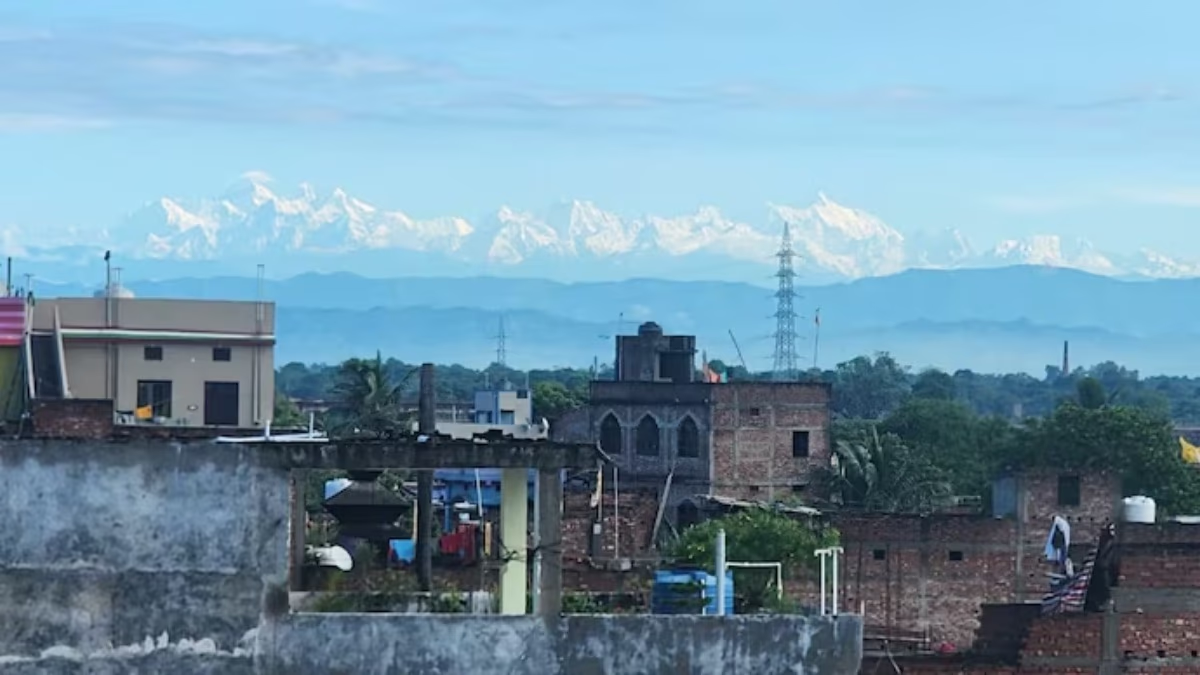Have you ever imagined that you could see Mount Everest, the world's tallest peak, while residing in Bihar? While it might sound like a marvel, it's a reality. In Bihar's Madhubani district lies a small town on the border with Nepal named Jaynagar.
When the skies are clear and the air is free of dust or smoke, the icy peaks of the Himalayas appear on the horizon. These towering, snow-capped mountains seem to pierce the sky with their grandeur. Jaynagar, located in Bihar's Madhubani district, rests on the banks of the Kamla River. It is more than just a border town—it is a hidden treasure of natural splendor. As the sun rises, the peaks shimmer with a unique glow, looking exceedingly beautiful from afar. Let us delve into what makes this place extraordinary and how you can reach it.
Situated in the Mithila region of Bihar, Jaynagar is not only known for its historical significance but also for its breathtaking natural beauty. Located on the banks of the Kamla River, which flows from a glacier in Nepal, the town aligns with the map’s direct view of Mount Everest. When the air quality is high, and the sky is pristine, you can witness the magnificence of the Himalayas from the town's high-rise buildings and the dam on the Kamla River.
According to locals, the spectacular view is most distinct during two specific periods each year. The first is from Chaitra-Baisakh (from Vasant Panchami to Holi and Ram Navami) and the second is from Ashwin-Kartika (from Durga Puja to Kartik Purnima). During these months, cooler air and enhanced visibility offer an exceptionally clear view of the snow-laden landscapes. It wasn't the first time this was visible—in May 2020, during the lockdown, clean air revealed this scenery in its full glory.
See Also: Witness Celestial Wonders in Ladakh - The Rise of Astro-Tourism
Another fascinating feature of the Himalayas seen from Jaynagar is the color-changing peaks. During sunrise and sunset, these peaks gradually transform their hues, providing tourists with an unforgettable experience. With the first rays of the sun, the snow-capped peaks take on a copper-like sheen, gradually brightening to a golden hue, and eventually settling into a tranquil silver. By evening, the process reverses. The peaks transition from silver to gold, then to a bronze shade before slowly blending into the twilight sky.
Not only does this scene provide visual tranquility, but it also instills a unique sense of pride and serenity when standing at the India-Nepal border, gazing at the world's tallest peak.
Jaynagar is renowned not only for its natural allure but also for its cultural significance. It serves as the starting point of Nepal’s only railway line, from where travelers journey to Janakpur. Moreover, the surrounding areas are dotted with religious sites. Chief among them is the village of Saurath, hosting the annual Maithili Brahmin marriage discussion forum. The Somnath Mahadev Temple also draws numerous devotees.
Also Read: Experience 90-Second Airline Journey - 58 Years of Tourist Travel in This Airplane
Getting to Jaynagar is incredibly convenient, as it is well-connected by both train and bus.
By Train:
Direct trains to Jaynagar are available from Delhi and Bihar's capital, Patna. Additionally, trains run from Madhubani to here.
By Bus and Road:
Buses are available from major cities in Bihar to Jaynagar. Travel by car or taxi is also a comfortable option.




